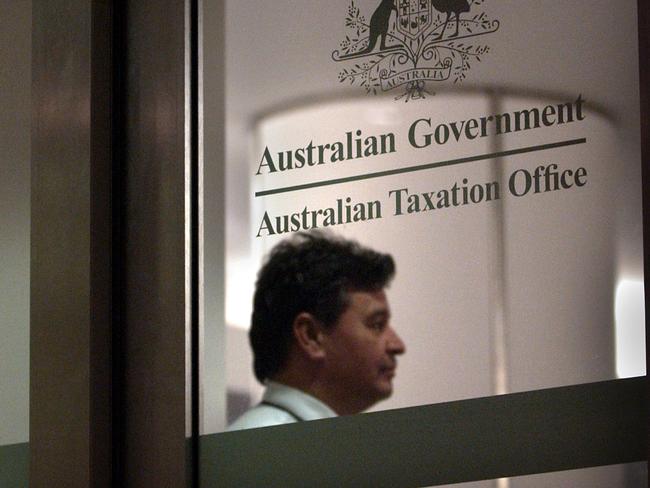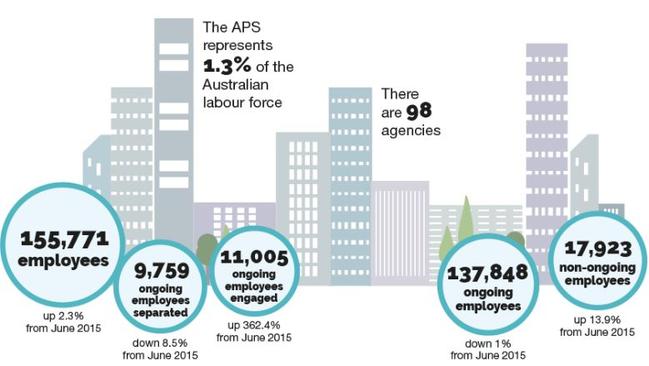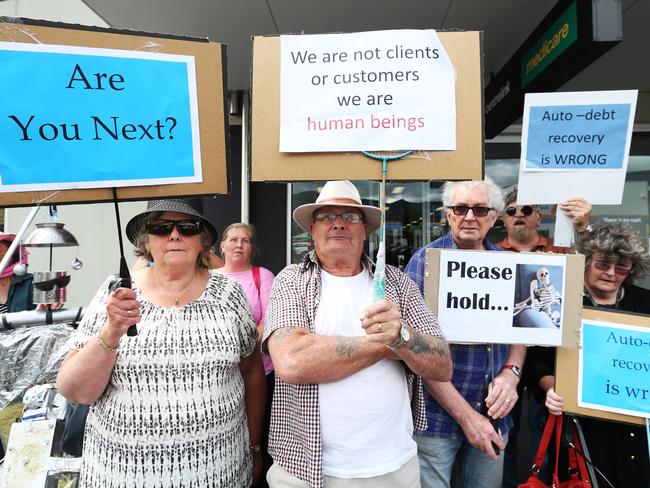Why Australia’s public sector is failing
AFTER the jaw-dropping revelation that staff at the ATO refused to work nine extra minutes, insiders have exposed even bigger problems.
THE ATO pay deadlock is simply the latest evidence of a broken public sector that is failing to fulfil its basic duties to the nation, according to insiders.
There was disbelief when it was revealed staff at the Australian Taxation Office refused an agreement that required them to work for an extra nine minutes a day to bring their hours in line with those of other government departments.
The deal would have seen employees receive a 0.8 per cent annual pay rise in return for extending their finish time from 4.51pm to 5pm, but elicited a huge backlash, with staff remaining at an impasse with management since June 2014.
The Community and Public Sector Union said in the statement the real problem was the “inefficient” cuts to more than 4000 jobs at the agency.

A former ATO staff member told news.com.au the stalemate was “a symptom of a greater problem” at an “incredibly poorly run” organisation where staff were “trapped under a pile of inept managers”.
He said that while the negotiation of the enterprise agreement had been going on, top-level senior executive staff had received a pay increase.
“The staff feel that the senior management do not support them, do not respect them, and do not deal honestly with them,” said the employee, who worked for the ATO for several years. “In addition to all of this, the voluntary redundancy process that was begun under [Commissioner of Taxation Chris Jordan] has been a shambles. It resulted in swathes of people who were about to retire essentially getting a golden handshake for doing so, as well as some of the best staff leaving, who could find other jobs.
“It was the poor staff in middle management who clung to their jobs, but who needed to go.”
He said Mr Jordan was attempting to run the ATO “as private enterprise”, and it wasn’t working.
The ATO said in a statement that it working “to ensure our engagement and communication approaches meet our employees’ needs” and reach an agreement “that provides a good outcome for staff, the ATO, the Government and the Australian taxpayer.”
In response to the employee’s comments, it added: “We respect some former staff may have views about the ATO. We don’t propose to engage in a public commentary on those views.
“If an ATO employee has concerns they would like to raise there are internal channels available for them to do so.”

SENIOR STAFF RAKE IN $400,000
While pay grade classifications are the same, salaries vary significantly between the 98 public service agencies in Australia. For example, an Executive Level 1 staff member at the Australian Office of Financial Management would be paid a starting salary of $118,644, while an employee of the same level at the Australian National Maritime Museum would receive $96,716.
There is also a wide range of salaries within agencies. Staff members on the lowest pay grade at the ATO are paid $26,981, while those at the highest — Senior Executive Service Band 3 — receive $323,767, or a notional total remuneration of $407,610 if you include the provision of a car, parking and superannuation calculated at 15.4 per cent of 101 per cent of base salary.
The number of SES public servants across the entire sector has more than doubled over the past 20 years.
More than 150,000 people are employed by the Australian Public Service, an increase of 2.3 per cent from June 2015. Almost 18,000 of whom are contract workers, up 13.9 per cent.
After the recent staff cuts of 4000, “unexpected delays in recruiting additional staff at reduced classification levels” led to lower than expected employee expenses in 2015-16 — but this didn’t result in a saving.
This is because the high number of contractors needed to implement critical IT projects and deliver services meant supplier expenses were higher than expected.

‘A LOT OF WORK WON’T HAPPEN NOW’
The Australian public has become familiar with computer meltdowns, glitches and system errors from government agencies jeopardising their privacy and quality of life, as well as costing a fortune in taxes.
In December, the ATO’s online system crashed because of a failure in a hardware storage solution provided by Hewlett Packard Enterprise. The website was restored almost 48 hours after the outage but there were fears the ATO might be unable to recover some of its data, although the agency said taxpayer information had not been compromised.
It was followed by yet another crash earlier this month, which Commissioner Mr Jordan blamed on further “failures” with the same system.
The continued problems have led some to speculate that tax time could be delayed. Mr Jordan said this suggestion is “completely without foundation”, adding that some people were “trying to create unnecessary mischief during what has already been a challenging and testing time for the community and the ATO”.
ATO chief information officer Ramez Katf said the agency would be reviewing its work program, but with tax time being its major source of revenue, IT expert Justin Warren told news.com.au it was likely other important projects would be dropped.

“They have finite resources,” he said. “A lot of work won’t happen now. It just delays everything. Whether that causes problems remains to be seen, but their track record isn’t brilliant.
“Clearly it’s not good enough. IT in general in Australia suffers from chronic under-investment, that applies to every large organisation.”
He pointed to the failures with Melbourne transport system Myki and Queensland Health as other examples of public sector disasters. The Census website failure was a huge disappointment and the botched Centrelink debt recovery system has had a devastating impact on vulnerable Australians.
And these crises are expensive. “Many projects are overpaid because they were poorly managed,” said Mr Warren, who has worked for Telstra, Australia Post, IBM and ANZ. “That chews up money that could have been spent on other projects.”
A Centrelink employee working in compliance told news.com.au most of the “debts” he dealt with were inaccurate. “The government is just cutting corners, calculating debts fast is their goal, and it’s just wrong,” he said. “Staff morale is so bad everywhere.”
The Department of Human Services has always maintained the online system is working as intended.
The Government’s former chief digital officer Paul Shetler, who resigned in November, told news.com.au the public service needs to be “radically re-skilled” and lacks a “co-ordinated approach” to technology.
“The root cause of these failures is a deskilled public service that doesn’t understand — and sometimes fears — 21st Century technology,” he said.
“Our government looks like it is the last bastion of the 90s outsourced model. We need to fix the basics first, before we do the fancy dancing holograms.
“We need the APS to go back to providing frank and fearless advice to ministers — and their ministerial advisers — and much less butt-covering to avoid blame.”
He said a “crisis of confidence” is looming in our $16 billion public sector, and the public needs to demand more if we are to see change.
Do you know more? Leave your comments below or email emma.reynolds@news.com.au.



